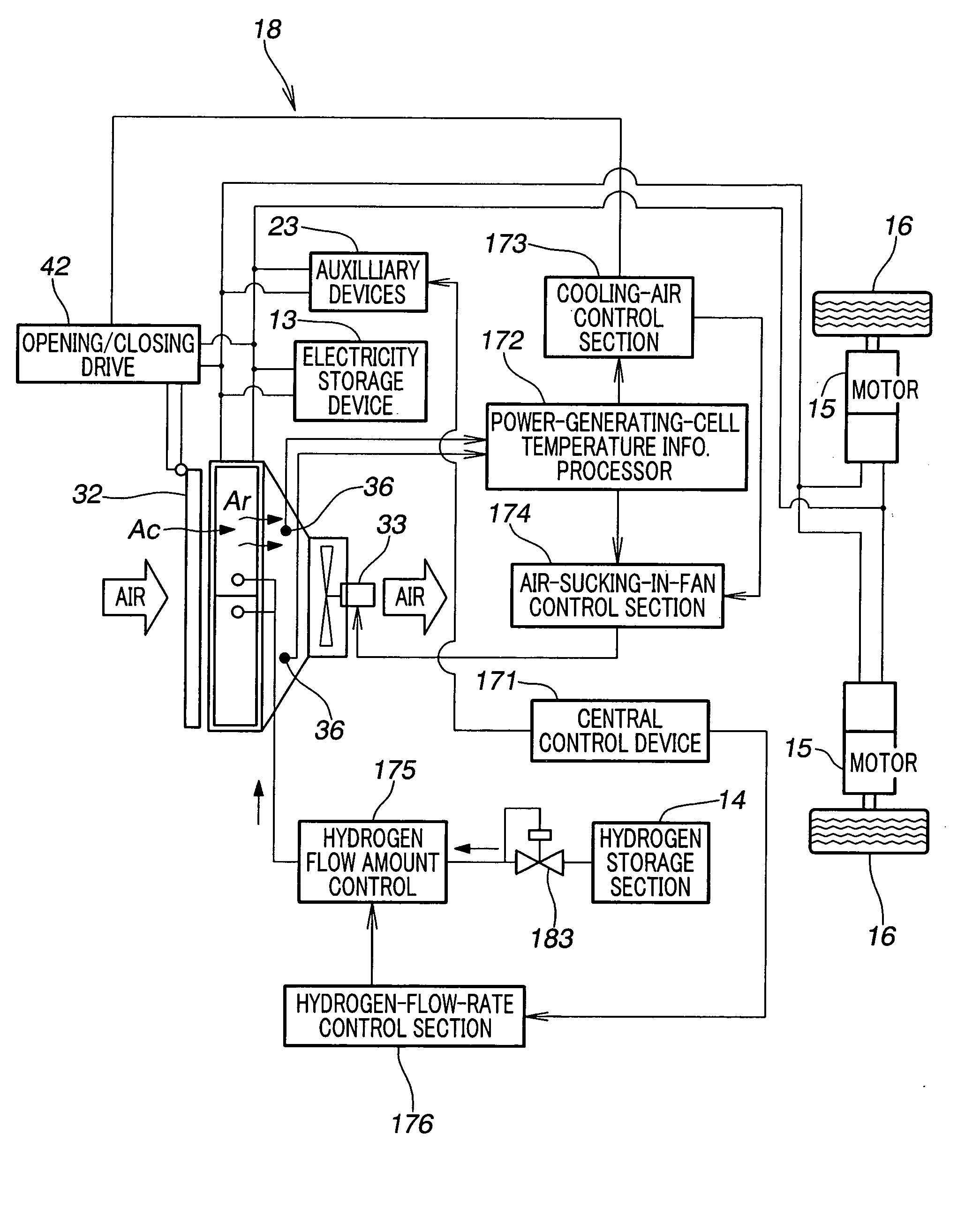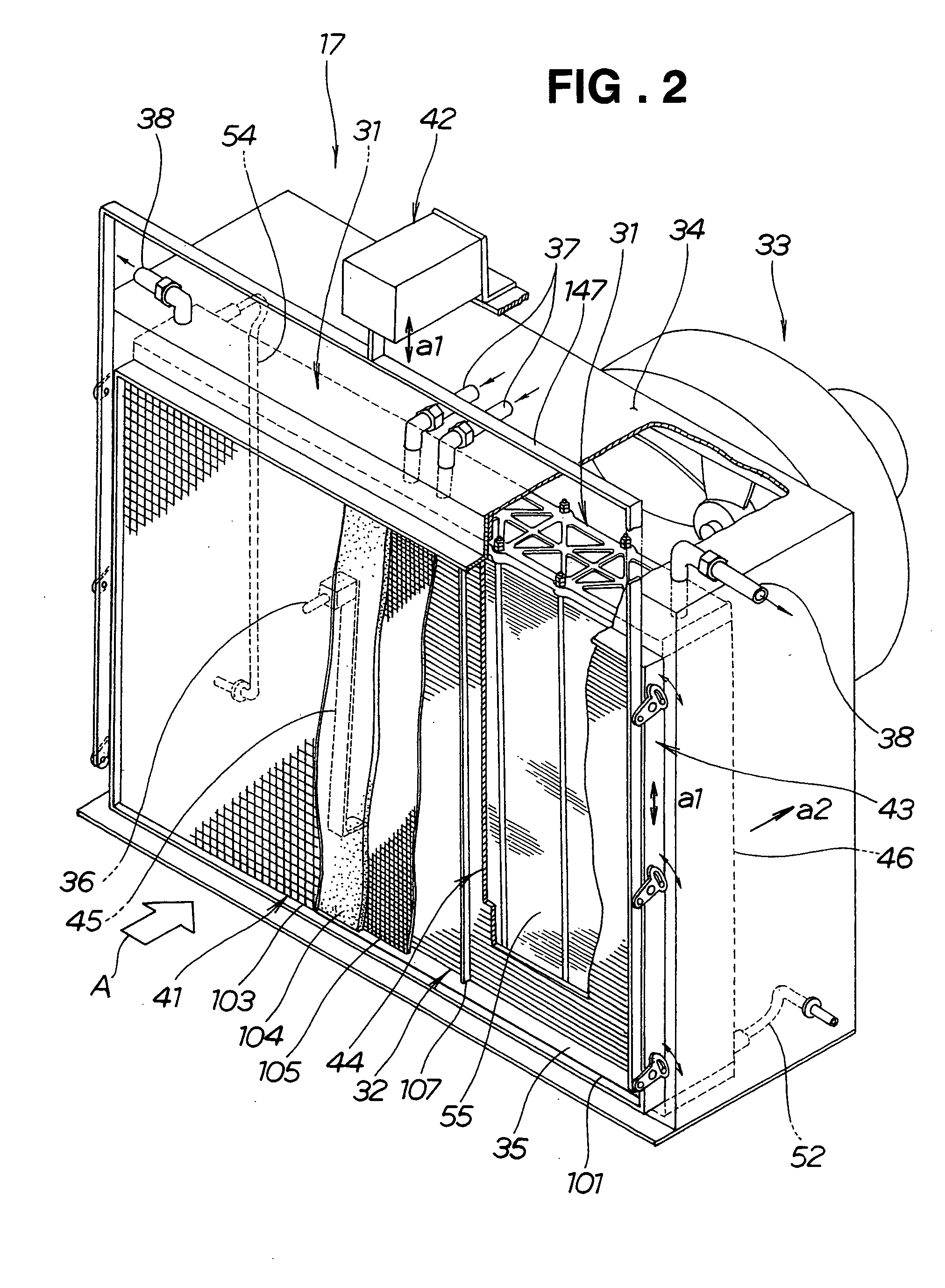Method for operating vehicle-mounted fuel cell stack
a fuel cell and stack technology, applied in the direction of hybrid vehicles, battery/fuel cell control arrangements, electrochemical generators, etc., can solve the problems of inability to easily dissipate or remove the fuel cell assembly is disclosed, and the heat produced in the fuel cell laminates b>201/b> cannot be easily dissipated or removed, etc., to achieve the effect of minimizing the cooling effect, effectively promoting, and reducing the cooling effect of b
- Summary
- Abstract
- Description
- Claims
- Application Information
AI Technical Summary
Benefits of technology
Problems solved by technology
Method used
Image
Examples
Embodiment Construction
[0027]FIG. 1 is a perspective view of a vehicle employing a vehicle-mounted fuel cell stack controlled or operated in accordance with the present invention. The vehicle 11, which is a fuel-cell-powered vehicle running on hydrogen fuel, includes an electricity storage device 13 disposed centrally in a vehicle body 12, a hydrogen storage section 14 disposed in a rear portion of the vehicle body 12, traveling motors 15 disposed in rear portions of the vehicle body 12, and rear road wheels 16 coupled to the traveling motors 15. The vehicle 11 further includes a fuel cell stack 17 disposed in a front portion of the vehicle body 12, and a fuel cell control device 18 for controlling the vehicle-mounted fuel cell stack 17. In the figure, reference numeral 21 represents an engine room, 22 an accelerator pedal, and 23 auxiliary devices. The auxiliary devices 23 are electric devices other than the traveling motors 15, such as a wiper motor 26, air conditioner motor 27 and head lamps 28.
[0028]...
PUM
| Property | Measurement | Unit |
|---|---|---|
| temperature | aaaaa | aaaaa |
| temperature | aaaaa | aaaaa |
| tm | aaaaa | aaaaa |
Abstract
Description
Claims
Application Information
 Login to View More
Login to View More - R&D
- Intellectual Property
- Life Sciences
- Materials
- Tech Scout
- Unparalleled Data Quality
- Higher Quality Content
- 60% Fewer Hallucinations
Browse by: Latest US Patents, China's latest patents, Technical Efficacy Thesaurus, Application Domain, Technology Topic, Popular Technical Reports.
© 2025 PatSnap. All rights reserved.Legal|Privacy policy|Modern Slavery Act Transparency Statement|Sitemap|About US| Contact US: help@patsnap.com



